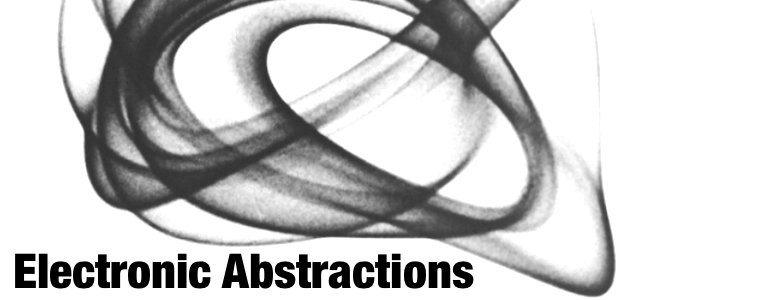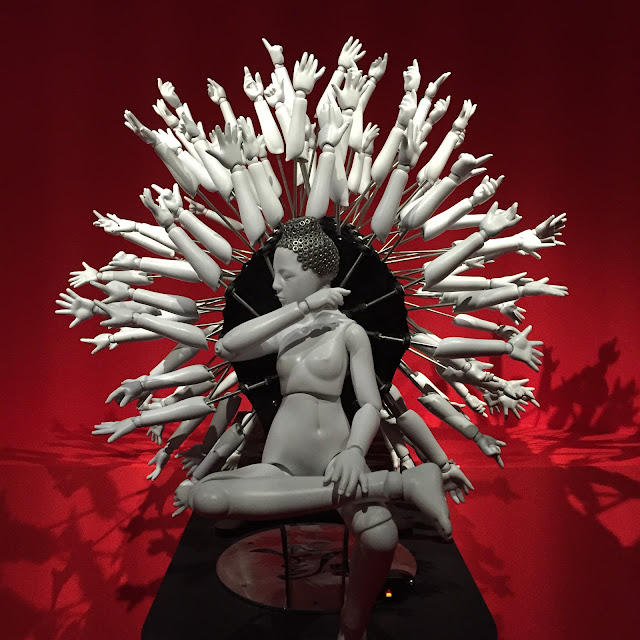jeudi 21 avril 2022
Colloque "Science et spiritualité, entre dialogue et confrontation"
mardi 12 avril 2022
c:o/re Workshop: Interdisciplinary Research in Robotics and AI
vendredi 8 avril 2022
Drôles d’Objets: A New Art of Making
[Reposted from KHK: https://khk.rwth-aachen.de/2022/04/08/2584/2584/]
Robots, autonomous artifacts, connected objects: how can we design and understand these strange objects that renew our interactions with others and the world around us? We are more and more often invited to enter into a relationship with robots or machines, whether for practical (therapeutic, professional, scientific) or playful purposes. This type of relationship is rapidly developing beyond simple functional use, automatic or mechanical action, towards a type of interaction that involves our effort to interpret the behavior of these objects. Why and how are we tempted to interact with unusual objects that ‘come to life’, move and evolve? The study of these objects interests a wide range of fields in science, art and design. I can mention, among others, robotics, AI, art and design, anthropology, psychology, philosophy, language sciences: each field develops its own notions, methods and tools, often in multidisciplinary contexts. What answers can the philosopher bring to the roboticist’s questions? How can psychology feed on the work of anthropology? Can artists contribute to the sociolinguistics of human-machine interactions?
In order to interface views in art, design and scientific practices on both these objects and the interactions they cause, the Psyphine research group joined forces with partners from the University of Lorraine, La Rochelle University and the Zero1 Festival for an interdisciplinary conference called “Drôles d’Objets” held during October 27th – 29th, 2021 in the harbour of La Rochelle [1]. In French, the adjective “drôle” covers a wide range of meanings and can be translated as amusing, entertaining, silly, creepy, surprising, funny, interesting, unusual, thought provoking, etc. The term refers to a complexity of issues which characterizes these curious objects as well as the various ways researchers, artists and designers address them.
The conference gathered more than 35 participants coming from various fields of research, such as computer sciences, robotics, art, design, psychology, management, philosophy, anthropology, linguistics. Organized around four main panels, the conference also devoted an afternoon to showcases, workshops and posters with Antoine Desjardin, Giancarlo Rizza, Dominique Deuff, Marion Voillot, Arnaud Blanchard, Romina Romay, Yann Boniface or Xavier Hinaut. The work of artists in residence Agustín Ramos Anzorena and Fabien Zocco (with his project Spider and I) were also presented during an evening session.
Starting with a session dedicated to conception practices, the conference first addressed questions related to the methods, tools and know-how associated with the design of interactive objects. How do we design an interactive animated object? What are the parameters, characteristics and properties we can play with so that an animated object becomes a “partner”? What are the tools, knowledge and technologies that can be mobilized? The first panel, coordinated by Nicolas Rougier, offered inputs on the diversity of approaches regarding not only the design of objects but also the tools and the methods employed to address conceptualizing from various disciplines. The session featured contributions from Jeanne Lallement and Juliette Passebois on service robots in commercial types of interaction, Mariela Yeregui on her research and creation project “États d’alerte” (State of alert), which illustrates the otherness of machines as a potential threat, Ghiles Mostafaoui on natural and intuitive interaction design in robotics and computer science, and Sylvain Raynal on the autonomy of the subject in his relation to industrial machinism and freedom.
The conference also addressed questions on the observation and the interpretation of results. How can we design an experiment? How can we understand what is happening during an interaction with an animated object? What can we measure, evaluate, and observe? What do we learn from these experiences? How to interpret data from experiments with animated objects? Can we trust the testimony of the subjects? Coordinated by Valeria Giardino, this second panel gathered contributions from Guillaume Nassau, who asked whether a robot is perceived as an interactant or as an object for discussion, and Manuel Rebuschi, who explored questions associated to mental projections and animism using Kendall Walton’s theory of fiction.
I had the pleasure to coordinate the third session, focused on health- and care-related issues. Robotics and computer sciences have entered this field in various ways. A number of projects are, for instance, concerned with the cohabitation of humans and robots. Some aim at replacing humans in work situations. Robots are also used as a new sort of mediation tool for caregivers. However, their therapeutic contribution remains difficult to establish. With contributions from Jean-Pierre Merlet on the conception and the experimentation of assistive robotic objects, Gloria Michiels on the ethnography of humanoid robots in care spaces, Olivier Duris and Charlotte Labossière on the use of robots regarding children suffering from autistic spectrum disorders, and Quentin Dumoulin on the role that fabrication laboratories could play in pedopsychiatry, the panel addressed questions raised by robots and artificial intelligent-based objects. Are they useful tools or rather gadgets? What is their role? Is their aesthetic appearance important? Do they replace the work of caregivers or are they rather a new tool in the therapeutic process?
Finally, the last session coordinated by Virgine André addressed experiences conducted on telepresence, interactive systems and virtual reality. Gathering researchers mainly working in the field of language and education sciences, the panel explored the effects of telepresence oriented technologies on social interaction. Maud Ciekanski and Virginie Privas-Breauté presented the results of a comparative study of immersive technologies for language learning. Jean-François Grassin showed how telepresence robots modify attention processes during a meeting. Joséphine Rémon, Christelle Combe and Amélie Bouquain, presented an experimentation on telepresence robots conducted within the project “présence numérique” (digital presence). Caroline Vincent, Christine Develotte, Mabrouka El Hachani and Justine Lascar addressed the methodology for studying interactions in mixed groups using telepresence robots.
The conference concluded with an intervention by anthropologist Denis Vidal and neuroscientist Frédéric Alexandre who aimed to put into perspective the work conducted during the week for a larger audience. The recording of their intervention, which is in French, can be viewed on the website of the University of Lorraine: https://podcast.univ-lorraine.fr
This interdisciplinary conference showed the necessity of crossing the viewpoints of different disciplines when it comes to the design of interactive robotic systems. It showed that despite the differences, only a transversal approach involving engineering sciences, humanities and social sciences, artists and users can address the major issues that these “drôles d’objets” pose to our societies.
[1] The proceedings of the conference can be found here.
Käte Hamburger Kolleg (c:o/re) - Lecture Series
Social Anthropologist Joffrey Becker, Fellow at the Käte Hamburger Kolleg: Cultures of Research (c:o/re) at RWTH Aachen University and Research Associate at Laboratoire d’Anthropologie Sociale at the Collège de France, talks about human-machine interactions and social changes associated to the design of intelligent systems. This talk was part of the Lecture Series „Digitalization of Research” at c:o/re.


